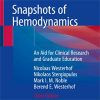Microtools to Identify and Resuscitate Microcirculatory Dysfunction in Critically Ill Patients
healthmanagement.orgDespite recent advances in the timely restoration of impairments in the oxygen supply chain to the tissue (Yealy et al. 2014; Peake et al. 2014; Mouncey et al. 2015), circulatory shock remains a major contributor to mortality in critically ill patients.
The lung and pulmonary circulation, the right and left heart, and the systemic circulation consisting of arteries, veins, and microvessels, provide oxygen to the target cells by perfusing the tissue with red blood cells saturated with oxygen (Guven et al. 2020).
In the systemic circulation, two overarching categories of circulatory shock may be differentiated by the primary mechanism of circulatory failure.
On one hand, tissue red blood cell hypoperfusion may be secondary to a reduction of blood flow within the large arteries and veins, or a reduction of the oxygen-carrying capacity of the blood.

















